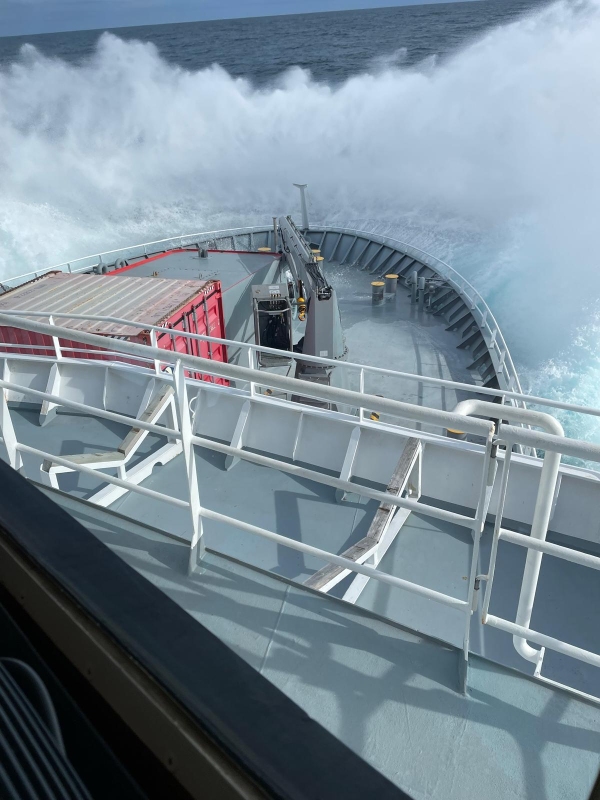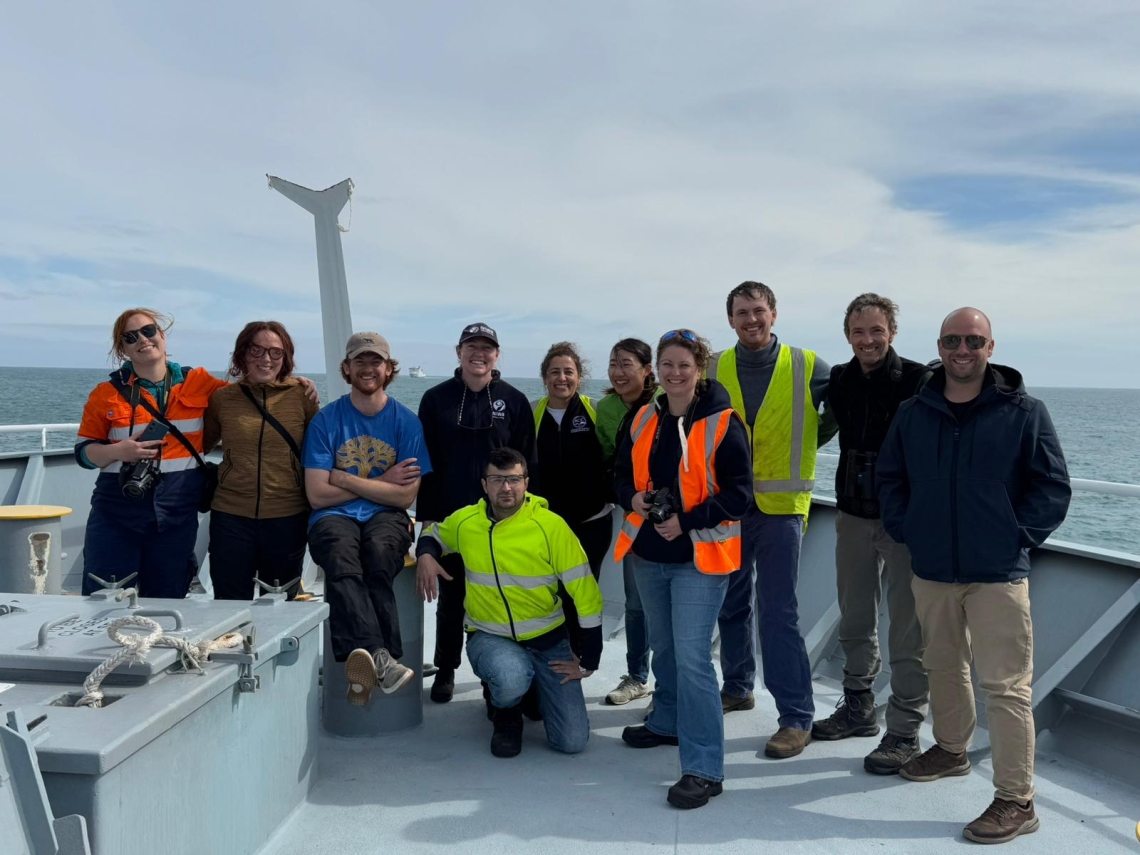After nearly a year of planning we are finally underway. The crew of RV Tangaroa cast off the lines from Burnham Wharf at 4pm on January 14th and we skirted the tip of Miramar Peninsula, past the Massey Memorial, and out through the harbour entrance – dropping the harbour pilot as we went.
There is little forgiveness sailing out of Wellington as you go straight into Southern Ocean conditions. We were fortunate that, after 10 days of southerly winds that had seen cancelled ferry sailings, the conditions had eased enough that, whilst not flat, it wasn’t carnage.
We now commence a long straight line south. Touch wood, but we look to be shooting the gap between two storm systems. When I mentioned this at our pre-departure media conference, a journalist wanted to know if the storms were unusual. I responded that it was the Southern Ocean, and so the lull was the unusual thing.
The long transit down gives the team time to get to know the ship, the gear and each other. We have 20 scientists aboard and 18 crew, so it’s a reasonably full ship. Most of the science team share a cabin, so you sure get to know your cabin mate. The crew are putting the team through daily drills so the science team can stay safe in what is a complex work environment.
We have three key voyage objectives plus several side-activities.
(1) maintaining our heat/salt sensors located at various locations around the Ross Sea
(2) comparing eDNA and acoustics sensing of fish populations and zooplankton, and
(3) the biggest single task is mapping and cataloguing of seabed plants and animals.
We also have smaller projects monitoring the atmosphere as we sail and retrieving whale monitoring sensors. The tech is a nice mix of gear that the oceanographer of 1950 would recognise, along with cutting-edge robotics, acoustics and eDNA methods. I’ll focus on the teams, Institutes and work in later updates.
This is the 16th Tangaroa voyage to the Ross Sea. It's interesting to reflect on the evolution of funding over that time. There have been voyages primarily funded by things as broadly spread as hydrographic surveying baselines and whale population counts. Then came fisheries science, which evolved into Marine Protected Area research. The last few voyages have seen a steady growth in support from the NZ Antarctic Science Platform which has a "climate in Antarctic and implications for NZ" focus. This looks to be true for future voyages too, along with central Government support for the vessel-time. This enables longer-term planning and means the Antarctic ocean research community can build national and international linkages, as well as the science that comes with that longer-term commitment to data and capacity-building.
As I write, we’ve just dropped off the southern margin of the Campbell Plateau and so beneath us are currents that are transporting water created around Antarctica a few decades ago that are now working their way past NZ and out into the wider ocean. The data we are gathering contributes to Antarctic, Aotearoa New Zealand and global understanding of the changing planet.
By Craig Stevens (co Voyage lead with Denise Fernandez).





